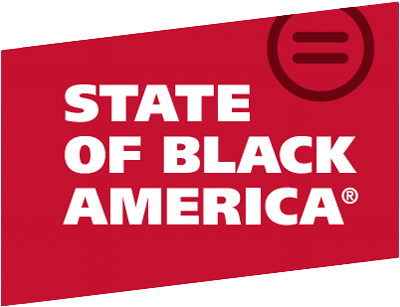The Civil Rights Act of 1964 wasn’t simply a piece of legislation; it was a turning point that altered the course of our nation. Consider that just decades ago, the color of your skin dictated whether you faced outright violence with the threat of death when you tried to cast a ballot if you were even allowed to cast one at all. Separate but equal ruled the day, with everything from schools, homes, and public parks segregated by race. While the Fourteenth Amendment granted equal legal protection to Black Americans in 1868, states that enforced Jim Crow reflected an entirely different reality–a legalized caste system centered around anti-Blackness.
The Civil Rights Act helped to dismantle nearly a century of Jim Crow-era laws that mandated the legalized separation of people by race and relegated Black Americans to second-class status. It opened access and opportunity for millions of people by banning segregation in public accommodations, granting equal access to restaurants, transportation, and other public facilities, and prohibiting discrimination in the workplace. The Act accelerated the enforcement of Constitutional rights and protections promised during the Reconstruction era following the Civil War.
It paved the path for civic, political, educational, and economic progress and opportunity. It led to a wave of other civil rights laws, such as the Voting Rights Act of 1965 and the Fair Housing Act in the period known as the Second Reconstruction, paving the way for decades of progress that followed its historic passage. The legislation also created a framework for challenging racism and discrimination in court at the state and federal levels. The changes were meant to be nothing less than sweeping and long-lasting.
However, as we mark the 60th anniversary of this landmark legislation, we find ourselves at another critical juncture in our nation’s history. The protections of the Civil Rights movement are being eroded and undermined. Just as we saw with the first Reconstruction, each new phase of progress around civil rights comes with new waves of backlash, and we are experiencing the impact of that right now and in full force.
In 2024, we face enemies that aim to thwart our righteous pursuit of racial equity and justice. In particular, and by no coincidence, we are being attacked where we have made the greatest strides: voting rights and political influence, educational equity, and economic justice.
On the eve of one of the most consequential election cycles of our time, there are more state voter suppression laws on the books today than there were in 2020. This is a direct result of Supreme Court decisions that have whittled away at the most important provisions of the Voting Rights Act (VRA). Without the VRA’s “preclearance’ provisions,” there has been an alarming and coordinated rise in voter suppression laws and racially gerrymandered electoral maps in states like Mississippi, Alabama, Georgia, Florida, Texas, and South Carolina—laws that would likely have been blocked under the original VRA framework.
Voters in almost 30 states will face restrictions in the 2024 election that they’ve never experienced in a presidential election before, making it harder to vote. More voters have been purged from the voting rolls polls, and orchestrated disinformation and voter intimidation campaigns—both in-person and online--have only become more sophisticated. As neo-conservative and white nationalist agendas gain support, our democracy hangs in the balance.
The Civil Rights Act itself is also being used to undermine progress. Last year, the Supreme Court interpreted Title VI of the Civil Rights Act and the Fourteenth Amendment Equal Protection Clause to severely limit the use of race-conscious admissions in higher education. This decision functionally spelled the end of affirmative action. Even worse, morally bankrupt campaigns are now engaging in brazen interpretive overreach, weaponizing the law to undermine innovative race-conscious programs in other contexts, from government and private contracting to venture capital and pipeline programs such as scholarship funds. They are using the very tools that made Civil Rights progress possible to roll back essential gains for Black people well deserving of quality education and business and employment opportunities.
We are being tested in ways we have not seen in generations. But we cannot tolerate a return to the restrictive quasi-democracy of decades ago. This moment demands that we reflect on the protections we won with the passage of the Civil Rights Act, which are now under threat, while also building new paradigms and infrastructure for the future. Suppose we are to uphold the legacy we have inherited. In that case, we must act swiftly and collectively to build a new movement—a Third Reconstruction—to fully actualize the promises of democracy for Black people and other communities of color.
Dating back decades, activists, scholars, and grassroots leaders began calling for a Third Reconstruction to address the structural barriers that continue to block Black people from equal opportunity and power. The challenges we face today suggest three critical components.
First, modern-day discrimination demands modern-day laws to stop it. A Third Reconstruction should include new legal paradigms and statutory frameworks designed to address contemporary forms of discrimination, including structural racism, in ways that fundamentally shift accountability and interactions between and among people and between people and the government. This means robust deployment of legal frameworks that do not require the ever-elusive proof of racial animus, like disparate impact frameworks throughout all parts of the law. As poll taxes and literacy tests once blocked access to the ballot box, so now do voter ID requirements, limiting access to early voting and voting by mail, and provisions that enable and encourage people to challenge other individuals’ eligibility to vote.
These modern means of voter suppression are no less discriminatory than those of the past. We need new legal frameworks that also address discrimination based on the technology of today and the future—from disparate impacts in access to critical telecommunications infrastructure like broadband to algorithmic bias and artificial intelligence. We also need laws that go beyond non-discrimination principles to confer affirmative rights—for example, the right to vote and the right to self-determination and bodily autonomy. We need laws that promote and protect Black people from all forms of violence—including from police and white vigilantes who so often act with impunity for lack of meaningful accountability.
Second, a broad coalition will be crucial to durability. Beyond new legal frameworks, a Third Reconstruction must also be a collective, all-hands-on-deck enterprise. The Civil Rights community cannot drive this effort alone. A genuinely transformational Third Reconstruction will rely on the investment and effort of a broad spectrum of stakeholders. The mobilizing efforts of the Civil Rights Movement should serve as our guide. Expert organizers years ago called upon those who, collectively, possessed the greatest power and influence over people, faith, culture, the economy, politics, and the law to step up—leveraging their fiscal capital, their human capital, and—importantly—their reputational capital in the fight for racial justice.
Today, we should expand that call and insist that corporations and business leaders who profit from our communities also stand up for our communities. We need more than short-term and performative “social good” reactions to racial and social justice “reckonings,” akin to what we experienced following the murder of George Floyd and Breonna Taylor. Amidst lawsuits and pressure tactics intended to “hush” or eliminate diversity, equity, and inclusion programs, a modern movement needs vocal and visible leadership from corporate leaders in the C-Suite. They must stand up for what they know is right and double down on (and fulfill) their commitments to cultivating diverse workforces, directly supporting communities of color, and leveraging their brands on issues that matter to us.
Third, every movement needs a powerful narrative. Today’s prevailing public narrative is one of defeat, devolution, and doubt. After seeing what the courts and policymakers have done to voting rights and reproductive rights and seeing little to no progress on federal legislation, many Black Americans are wondering who will fight for us and whether we can win. Succeeding in a Third Reconstruction will require changing that narrative. Here is where we can gain inspiration from our past. When the Civil Rights Act was passed into law 60 years ago, our ancestors who pushed for a Second Reconstruction had every reason to think they would lose. They did not have a Civil Rights Act or a Voting Rights Act. They had every reason to believe that they would be hurt or even killed for even trying to fight. Today, our work takes effort and risk, but thanks to those who came before us, we have a stronger foundation to build upon than they did.
Our inheritance is not a guarantee of success. Our inheritance is knowledge from past lessons, the understanding that if we do not fight, we cannot win, and that progress is not permanent and challenges will continue to come. The Civil Rights Movement taught us that not only do we belong in this nation, but that we should have full access to all of its institutions, opportunity, and prosperity. The most significant part of that inheritance is the understanding that what we are fighting for is the future we deserve. That must be our narrative.
Sixty years ago, when America looked far different than it does today, elected leaders effectively pushed through critical pieces of legislation like the Civil Rights Act to usher in a new day. If it was possible then, who are we to think we cannot win now?



